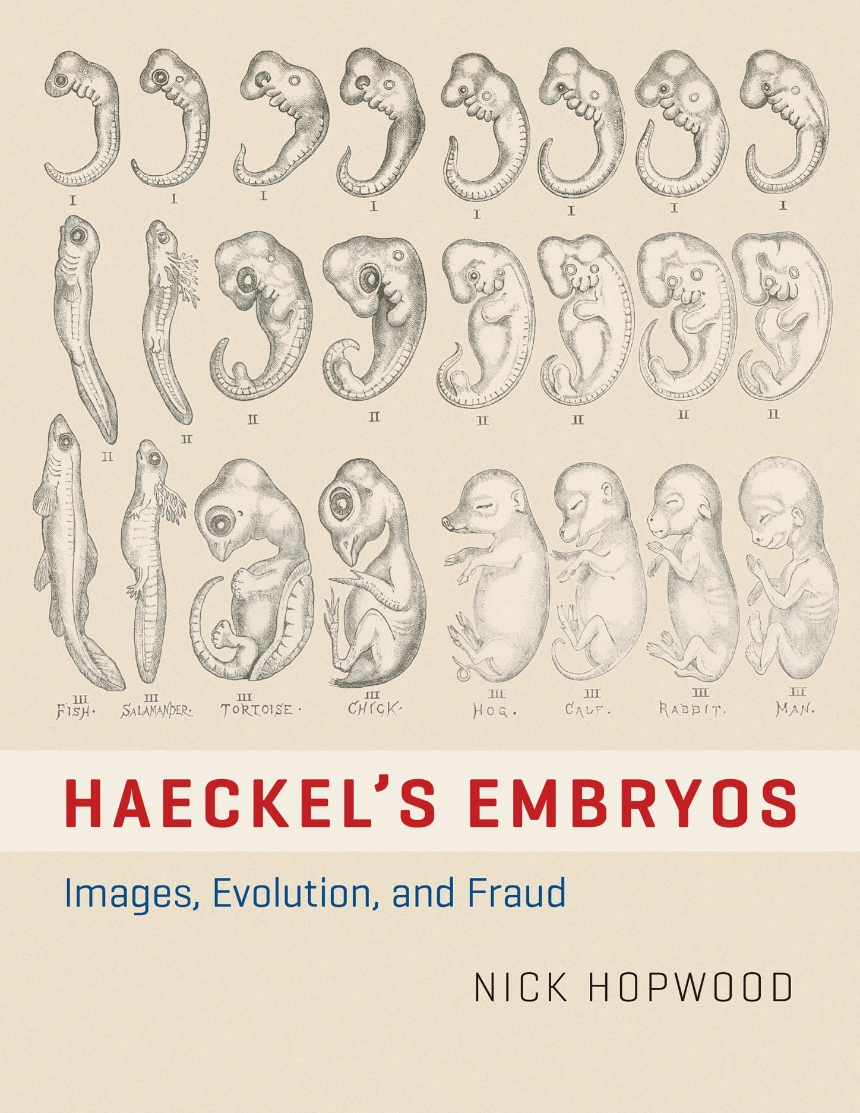Haeckel’s Embryos
Images, Evolution, and Fraud
In Haeckel’s Embryos, Nick Hopwood tells this extraordinary story in full for the first time. He tracks the drawings and the charges against them from their genesis in the nineteenth century to their continuing involvement in innovation in the present day, and from Germany to Britain and the United States. Emphasizing the changes worked by circulation and copying, interpretation and debate, Hopwood uses the case to explore how pictures succeed and fail, gain acceptance and spark controversy. Along the way, he reveals how embryonic development was made a process that we can see, compare, and discuss, and how copying—usually dismissed as unoriginal—can be creative, contested, and consequential.
With a wealth of expertly contextualized illustrations, Haeckel’s Embryos recaptures the shocking novelty of pictures that enthralled schoolchildren and outraged priests, and highlights the remarkable ways these images kept on shaping knowledge as they aged.
392 pages | 202 color plates, 2 tables | 8 1/2 x 11 | © 2015
Art: Art--General Studies
Biological Sciences: Anatomy, Evolutionary Biology
History: European History
Reviews
Table of Contents
1 Icons of Knowledge
2 Two Small Embryos in Spirits of Wine
3 Like Flies on the Parlor Ceiling
4 Drawing and Darwinism
5 Illustrating the Magic Word
6 Professors and Progress
7 Visual Strategies
8 Schematics, Forgery, and the So-Called Educated
9 Imperial Grids
10 Setting Standards
11 Forbidden Fruit
12 Creative Copying
13 Trials and Tributes
14 Scandal for the People
15 A Hundred Haeckels
16 The Textbook Illustration
17 Iconoclasm
18 The Shock of the Copy
Acknowledgments
Abbreviations
Notes
Works Cited
Index
Awards
British Society for the History of Science: Pickstone Prize
Shortlist
SHARP: SHARP-DeLong Book History Prize
Honorable Mention
History of Science Society: Suzanne J. Levinson Prize
Won
